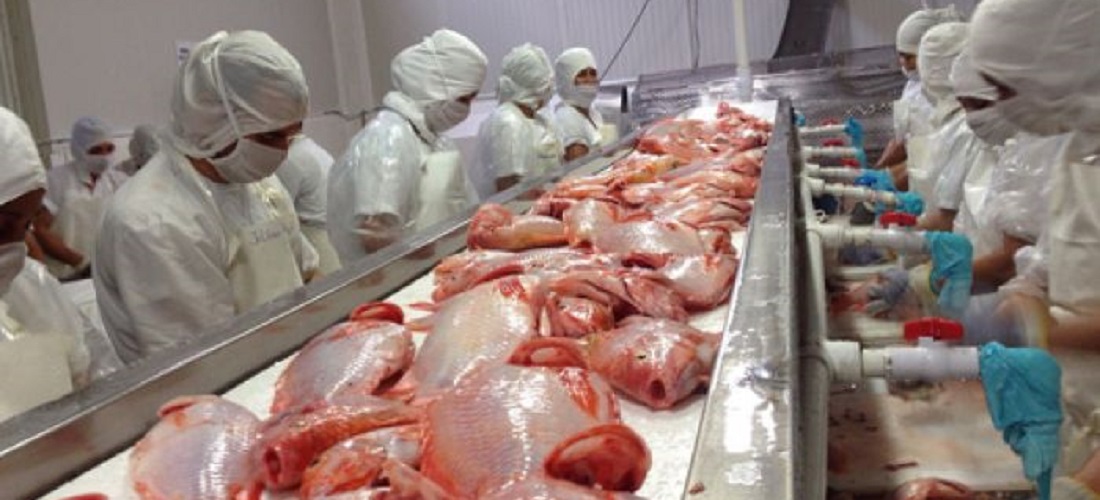
Brazil has great potential in tilapia exports
Feb, 23, 2022 Posted by Sylvia SchandertWeek 202208
Brazil is the fourth-largest producer of tilapia and the country with the most growth potential in the world in the sector. Fish farming has been advancing exponentially for just over a decade, and exports, which began about five years ago, follow the trend, bringing a turning point for the sector.
The segment’s export revenue grew 78% in 2021 compared to 2020, totaling USD 20.7 million. In volume, growth was 49% over the previous year, with 9,900 tonnes shipped. Frozen fillet sales increased 573% in 2021 in the same comparison. After fresh fillets, this is the second product with the highest added value in fish farming.
Current leading buyers of Brazilian tilapia are the United States (64%), Colombia (9%), and China (8%). Chile and Canada also buy the fish, mainly in fresh or frozen fillets. “Today, over half of the volume exported heads to the United States, but the trend is towards diversification of destinations,” Manoel Pedroza, a researcher at EMBRAPA Fisheries and Aquaculture, told ANBA. EMBRAPA is the Brazilian Agricultural Research Corporation.
In 2021, the production of farmed fish in Brazil was 841,005 tonnes, 63.5% of which were tilapia, with the rest concerning other species, especially tambaqui, tambacu, long-whiskered catfish, carp, and arapaima (also known as pirarucu), all of which are used for food, informed the president of the Brazilian Fish Farming Association (Peixe BR), Francisco Medeiros. This volume represents a growth of 4.7% over the previous year. Tilapia amounted to 534,005 tonnes, up 9.8% over 2020. Hydroelectric power plant reservoirs have a production capacity of around 3.5 million tonnes per year, which could make Brazil the largest potential producer of tilapia in the world.
“Tilapia and other farmed fish chains are very new to Brazil, about 15 years old, but they are growing a lot and attracting private investment; companies are focused on the foreign market, since the reduction in purchasing power limits the internal expansion, even more in this moment of crisis,” declared Pedroza.
Exports last year amounted to almost 10,000 tonnes, 5% of production. The potential to export is very considerable. Since 2019, a federal tax exemption for tilapia has reduced the cost of exports by around 10%. Thus, large animal protein companies, which already export massive volumes of poultry, mainly, began investing in fish farms, such as cooperatives Copacol and CVale, from Paraná. Hence, production has been increasing year after year.
“These cooperatives already export a substantial volume of poultry to the Arab countries, but fish is still in a small quantity,” said Pedroza. Fish farming is becoming the export focus for these companies, which already have logistics planning and infrastructure to sell abroad.
Peixe BR, which currently represents 70% of the companies in the sector in the country, has a sector project with the Brazilian Trade and Investment Promotion Agency (Apex-Brasil) to foster participation in shows, business rounds, and sectoral studies for companies intending to export. The president of Peixe BR, Francisco Medeiros, told that companies such as CVale, JBS, and Copacol are already present at the most prominent food shows in the world.
“Since they sell poultry, they take the tilapia in tow. It is still a minor presence, but we are there showing our product,” he said, referring to Gulfood, the most considerable food and beverage show in the Middle East and North Africa (MENA), which took place last week in Dubai. Peixe BR recently joined the Brazilian Association of Animal Protein (ABPA).
Where they are
The leading tilapia producer globally is China, followed by the Philippines, Egypt, and Brazil. Paraná is currently the top farmed fish producer Brazilian state, followed by São Paulo, Bahia, Mato Grosso do Sul, Minas Gerais, and Pernambuco. Over half the exporting companies are concentrated between São Paulo and Paraná.
EMBRAPA Aquaculture was established in Palmas, Tocantins, ten years ago. Pedrosa explained the state is not yet a significant producer, but it has enormous potential for having considerable soy and maize productions and large volumes of water available.
Fresh or frozen
Tilapia production has grown at around 10% a year, informed Medeiros from Peixe BR. He estimates it will increase between 10% and 12% in 2022 and the next few years, mainly due to exports, which he predicts should increase 78% or more this year. He reported in January alone, the volume of shipments rose 175% compared to the first month of 2021. This increase in volume is mainly going to the same buying countries, but together with Apex-Brasil, Medeiros hopes to open new markets.
About 50% of what is currently exported is fresh or frozen fillets. “Now, the export of frozen fillet and whole tilapia is increasing. Frozen fillet exports increased 650% last year, a number that is changing the entire production chain, as frozen fish fillets are an international commodity and a product with higher added value, and Brazil is taking advantage of this opportunity,” said the researcher Pedroza. Fresh fillet is transported by plane, and the frozen fillet can go by ship, which significantly reduces logistics costs and makes the Brazilian product more competitive abroad.
Players such as JBS have recently entered tilapia production, intending to use the Seara brand, initially in the domestic market and later for export. “We are experiencing a moment of transformation; tilapia is leaving the local chain and starting to become global. Major players are now entering and bringing changes to the sector,” said the researcher.
Source: ANBA
To read the full original article please see:
https://anba.com.br/en/brazil-has-great-potential-in-tilapia-exports/
-
Grains
Nov, 03, 2021
0
Brazil sets new record in fertilizer imports
-
Other Cargo
Jul, 31, 2023
0
High milk imports upset national production
-
Fruit
Nov, 27, 2024
0
Argentina’s 2024 citrus exports reach lowest figures in ten years
-
Meat
Feb, 07, 2022
0
Chicken meat exports grow 19.7% in January



